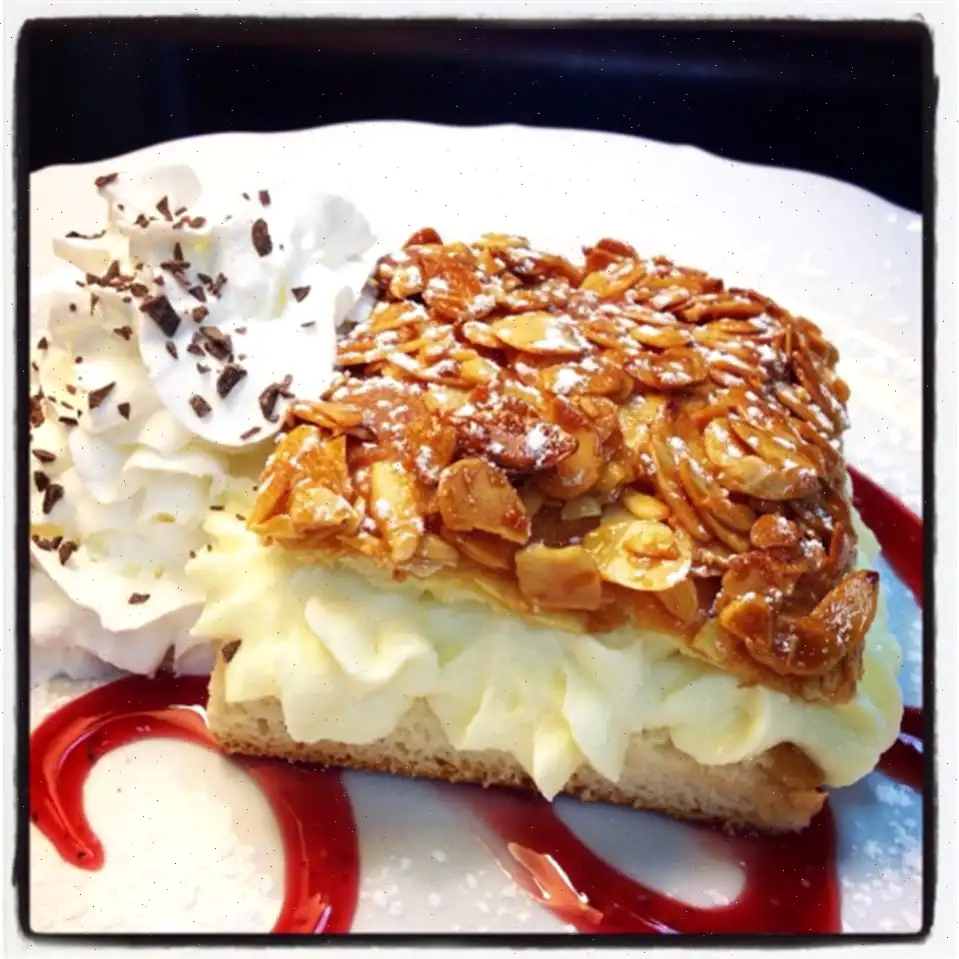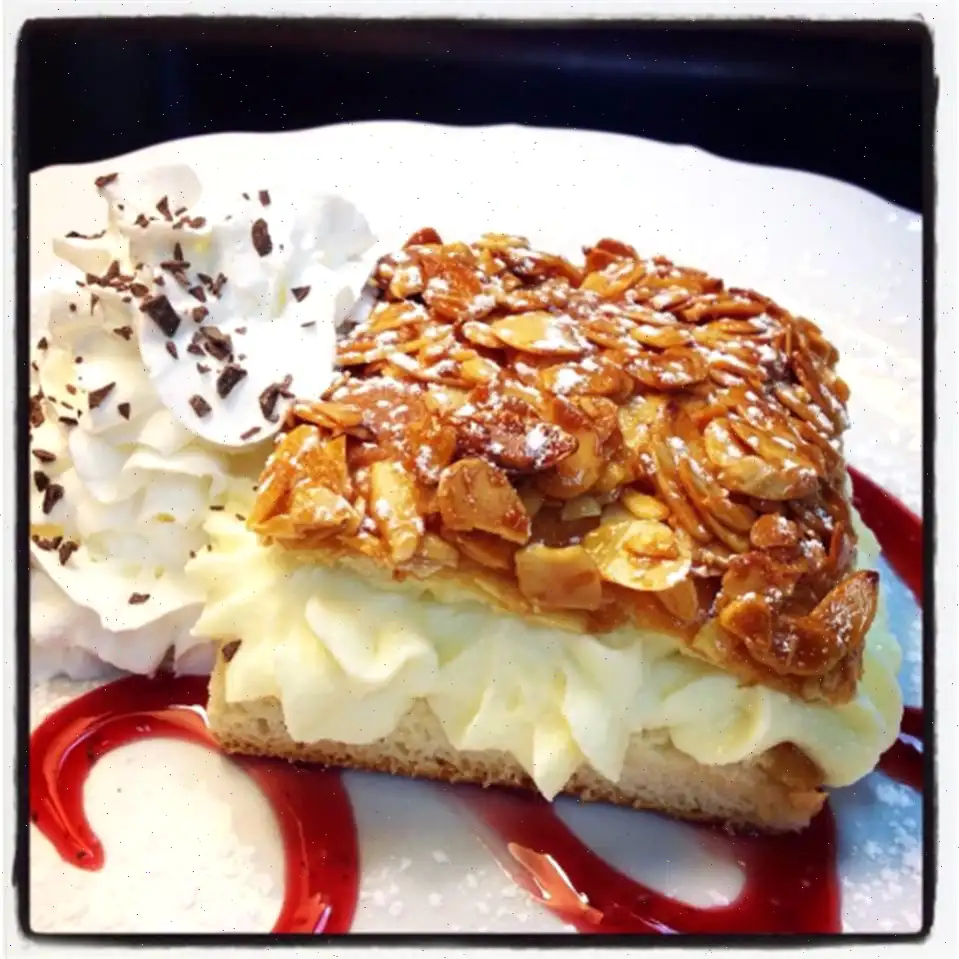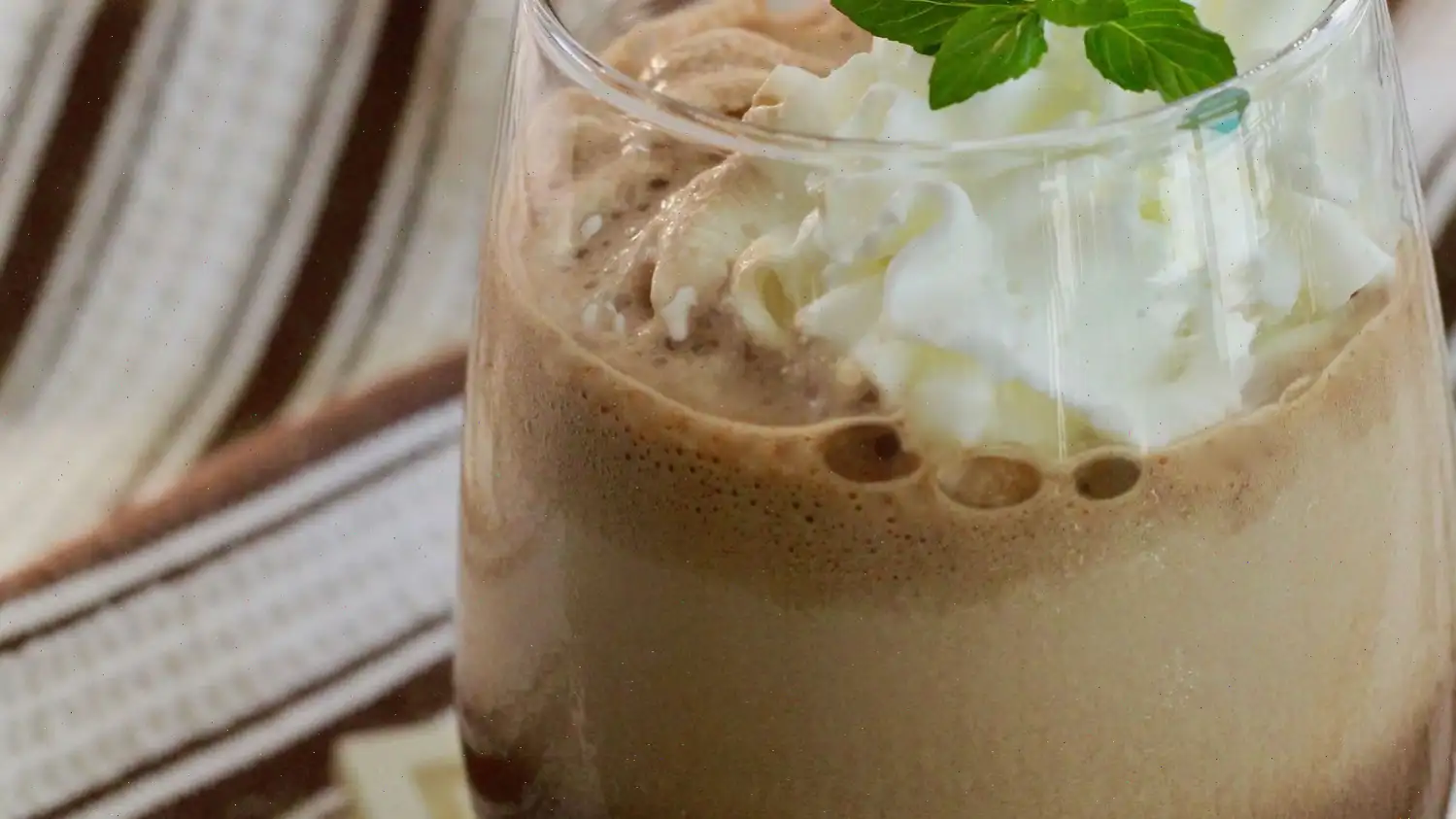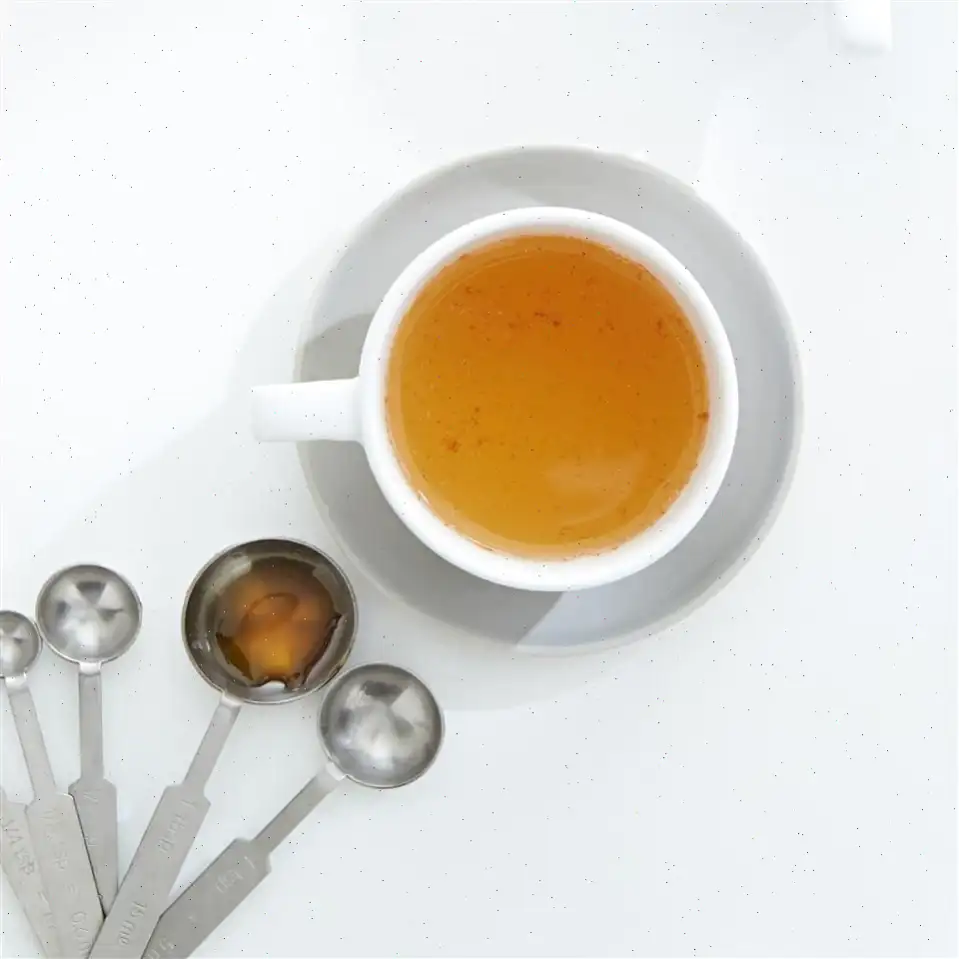
Bee Sting Cake (Bienenstich) Recipe
Ingredients:
- 1 cups all-purpose flour
- 1 tablespoon active dry yeast
- 2 tablespoons white sugar
- 1 pinch salt
- cup lukewarm milk
- 3 tablespoons butter
- 1 tablespoons confectioners' sugar
- 1 tablespoon milk
- cup sliced almonds
- 1 tablespoon honey (Optional)
- 1 cups milk
- cup cornstarch
- 1 tablespoon white sugar
- 1 egg, beaten
- 1 teaspoon almond extract
- 1 cup heavy whipping cream
- tablespoon cream of tartar
Directions:
Step 1: In a large bowl, combine the flour, yeast, 2 tablespoons sugar, salt, cup of milk, and 3 tablespoons of butter.
Step 2: Turn the dough out onto a lightly floured surface and knead for about 15 to 20 minutes, until smooth and elastic.
Step 3: Place the dough in a well-greased bowl, cover, and let it rise in a warm place for 1 hour or until doubled in size.
Step 4: Punch down the dough and roll it out to -inch thickness. Transfer to a greased 8-inch square baking pan.
Step 5: Cover the dough and let it rise for 30 minutes.
Step 6: While the dough is rising, melt 3 tablespoons of butter and confectioners' sugar in a saucepan. Add the sliced almonds and 1 tablespoon of milk.
Step 7: Remove the pan from heat, then stir in the honey (if using) and mix well.
Step 8: Carefully spread this almond mixture over the risen dough, ensuring it's evenly distributed.
Step 9: Allow the dough to rise for another 30 minutes.
Step 10: Preheat the oven to 400F (200C). Bake the dough for 20 to 25 minutes, or until the crust turns golden brown.
Step 11: Let the pastry cool completely on a wire rack.
Step 12: In a small bowl, dissolve the cornstarch in a little milk.
Step 13: In the top of a double boiler, combine 1 cups of milk, the cornstarch mixture, and 1 tablespoon of sugar. Stir and heat until thickened, about 2 to 3 minutes.
Step 14: Add the beaten egg, continuing to stir for another 2 minutes until the mixture thickens further.
Step 15: Remove the mixture from heat and stir in the almond extract. Let it cool, then cover and chill in the refrigerator for at least 1 hour.
Step 16: Whip the heavy cream with cream of tartar until stiff peaks form.
Step 17: Gently fold the whipped cream into the chilled pudding mixture until fully incorporated.
Step 18: Slice the cooled almond bread into 1 x 2-inch rectangles, then slice each piece horizontally into halves.
Step 19: Fill each slice with the chilled pudding mixture and refrigerate until serving.
Step 20: Serve cold and enjoy your homemade almond cream pastry!
Nutrition Facts (per serving):
- Calories: 226
- Total Fat: 14g (18% Daily Value)
- Saturated Fat: 7g (35% Daily Value)
- Cholesterol: 46mg (15% Daily Value)
- Sodium: 56mg (2% Daily Value)
- Total Carbohydrate: 20g (7% Daily Value)
- Dietary Fiber: 1g (5% Daily Value)
- Total Sugars: 6g
- Protein: 5g (10% Daily Value)
- Calcium: 73mg (6% Daily Value)
- Iron: 1mg (6% Daily Value)
- Potassium: 194mg (4% Daily Value)
Origin of the Bee Sting Cake
Bienenstich, known as "Bee Sting Cake" in English, is a traditional German dessert that has been delighting taste buds for centuries. Its name, "bee sting," is thought to come from the cakes sweet and sticky almond topping, which evokes the idea of a bees sting. This cake is believed to have originated in the medieval period, with many stories pointing to the town of Andernach in Germany, where it was first created. The legend tells that a baker created the cake in the 15th century to celebrate a local event. While the true origin remains unclear, one thing is certain: Bienenstich has become a beloved treat in German culture, often served at festive gatherings and family celebrations.
Regional Variations of Bienenstich
Bienenstich is particularly popular in the southern regions of Germany, especially Bavaria. However, variations of this cake can be found throughout the country, with slight differences in ingredients and preparation methods. In some regions, the filling might include custard or pastry cream, while others prefer a simpler whipped cream or Bavarian cream filling. The topping also varies; while the classic almond-honey topping is typical, some versions might include different nuts or even fruit. Despite these variations, the core elements of a yeast-based dough and sweet, crunchy topping remain the same, making Bienenstich a timeless favorite across Germany.
What Sets Bienenstich Apart from Similar Desserts
While there are many sweet German pastries, such as streuselkuchen (crumb cake) and apfelkuchen (apple cake), Bienenstich is unique for its combination of a yeast dough base and a sweet, nutty almond topping. The yeast dough gives the cake a light and airy texture, which contrasts nicely with the rich and crunchy almond topping. Additionally, the creamy fillingoften made with custard or whipped creamadds a layer of indulgence that distinguishes Bienenstich from other pastries. This combination of texturesfluffy dough, crunchy almonds, and creamy fillingmakes Bienenstich a standout among German cakes.
Where is Bienenstich Typically Served?
Bienenstich is traditionally served as a dessert or afternoon snack. It is commonly enjoyed at family gatherings, birthdays, and special occasions like Easter and Christmas. In Germany, it can often be found at local bakeries, particularly in the regions of Bavaria and Rhineland. The cake is also popular in cafs and is often served with a cup of coffee or tea. Its light, not-too-sweet flavor makes it an ideal choice for an afternoon treat, rather than a heavy dessert. In recent years, Bienenstich has gained popularity outside of Germany, and you can now find it in specialty bakeries around the world, especially in places with large German communities.
Interesting Facts about Bienenstich
1. The cake's name, "Bee Sting," is a playful reference to its honey-almond topping, which gives the cake its distinctive sweet, sticky, and crunchy texture.
2. In some parts of Germany, Bienenstich is believed to have medicinal properties, with its honey said to have health benefits such as soothing sore throats and improving digestion.
3. Bienenstich is often served as a symbol of celebration. It is frequently featured at weddings, anniversaries, and other milestone events due to its festive appearance and delicious flavor.
4. Though its origins remain unclear, the cake is deeply rooted in German culinary tradition and has been passed down through generations as a cherished family recipe.
FAQ about Bee Sting Cake (Bienenstich) Recipe
Comments
Debra Thompson
11/19/2023 09:57:53 AM
I had been longing for this cake for years. While my attempt didn't quite match up to the German bakery version, I was still thoroughly impressed. The almond topping was a huge hit. Next time, I'll omit the almond extract. To save time and avoid extra dishes, I opted for a can of Ambrosia Devon Cream custard whipped with heavy cream. Simply fantastic!
Cynthia Harris
03/05/2024 10:35:02 PM
Review: This recipe was decent - the cake didn't rise as much as expected even with ample baking time. I opted to use a combination of dream whip and vanilla pudding for the filling, which turned out to be a successful alternative. The cake received compliments and some even said it surpassed the one from the German bakery where my friend first tried it. I would definitely consider making it again.
Patrick Allen
01/15/2025 01:29:03 PM
I absolutely love this cake! It would be perfect for an elegant afternoon tea or as a delightful breakfast treat, in my view, as it's not overly sweet for a dessert. The presentation is exceptional and truly adds to the beauty of the experience. Although it may take some time and effort to prepare, the end result is definitely worth it! After getting stung by a bee three times yesterday, I decided to make this cake today to "make the best of a bad situation," and I must say it was a wonderful decision. I hope you enjoy it as much as my family did!








